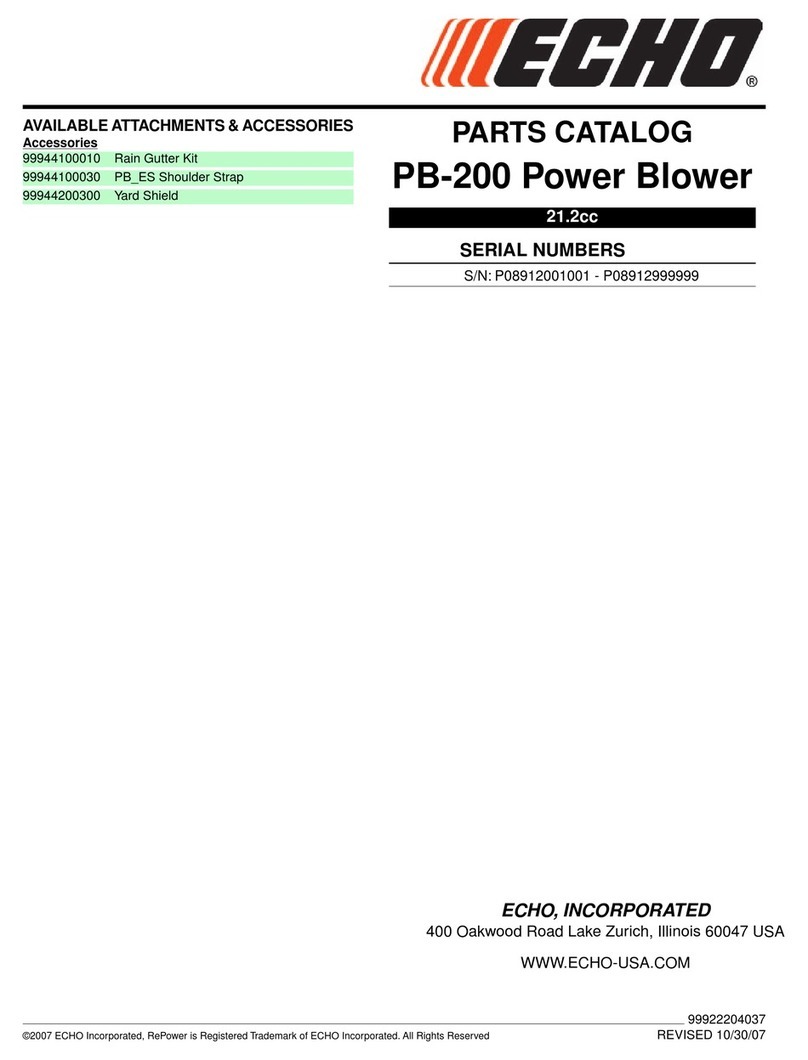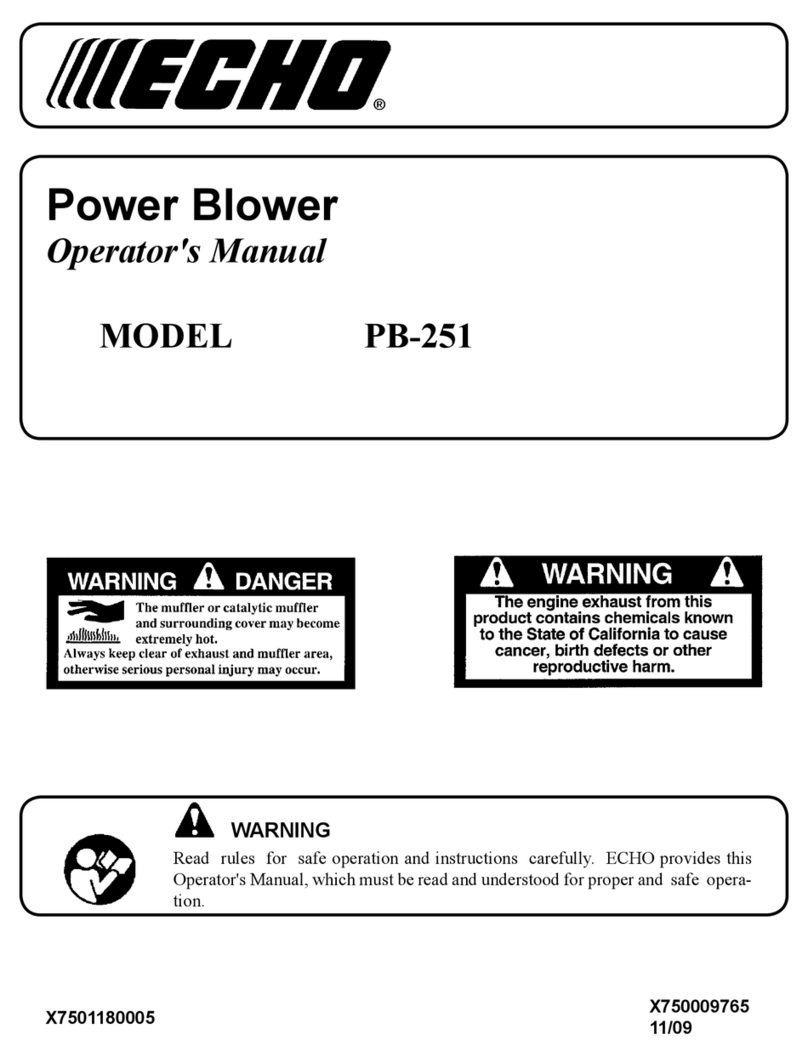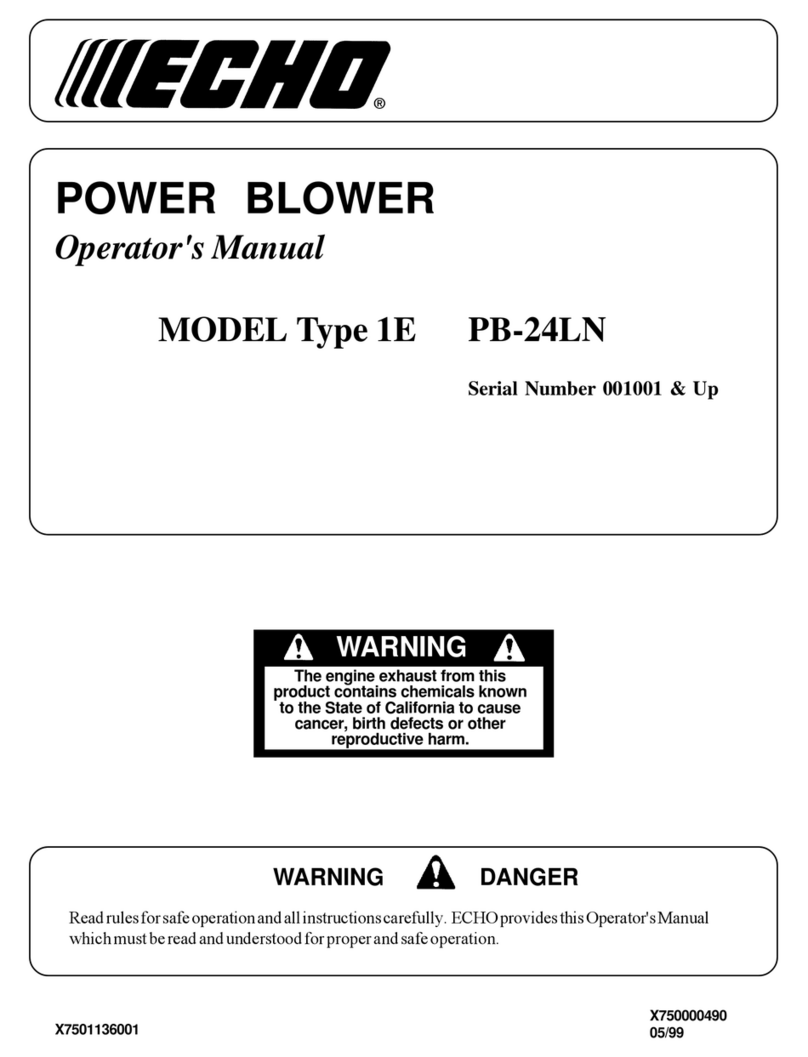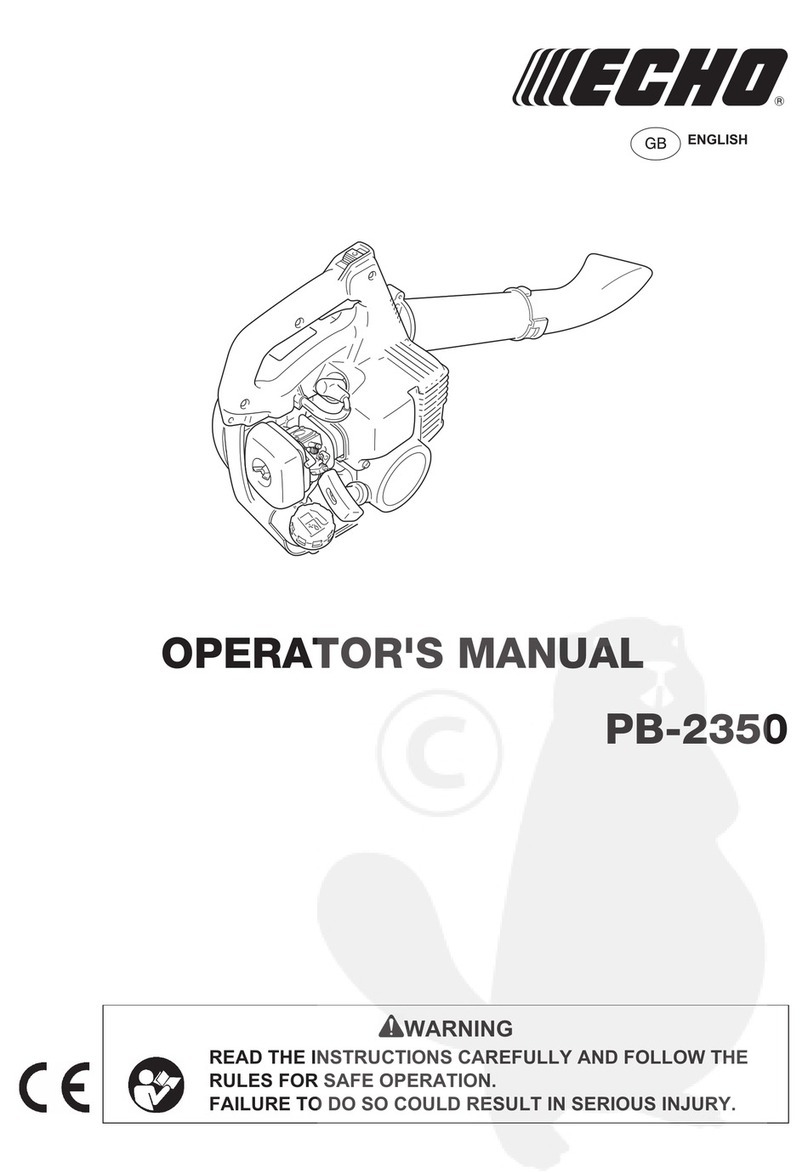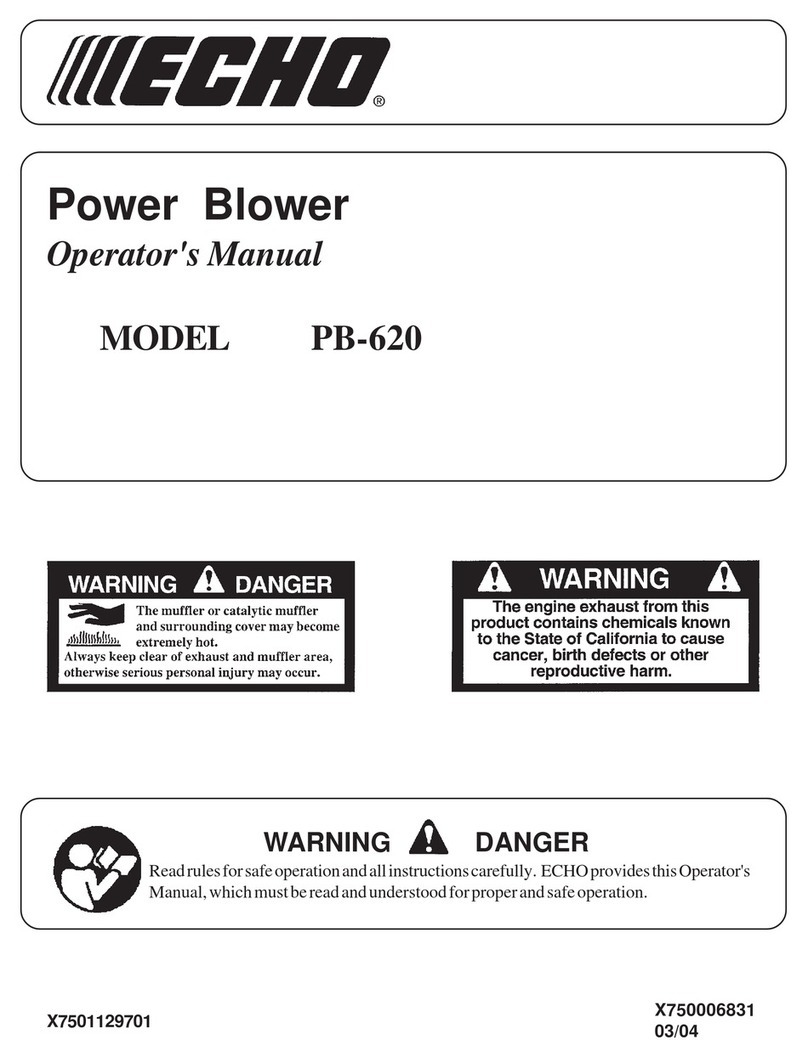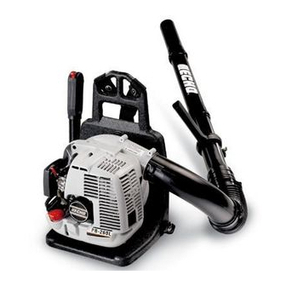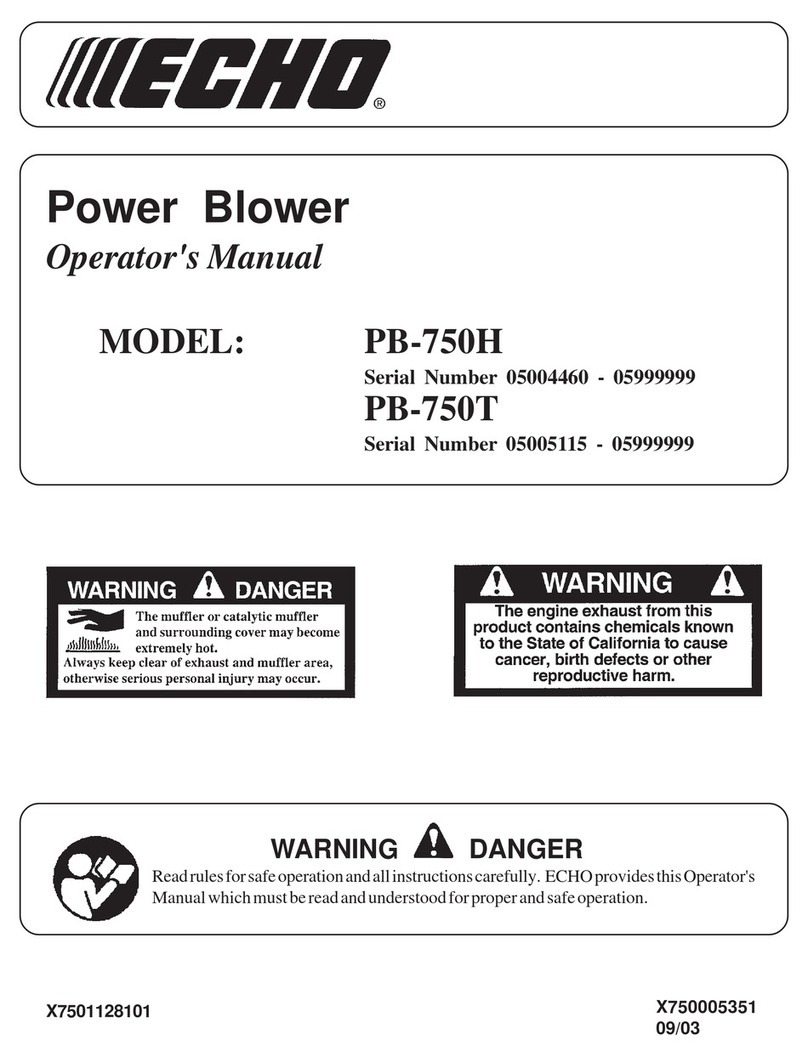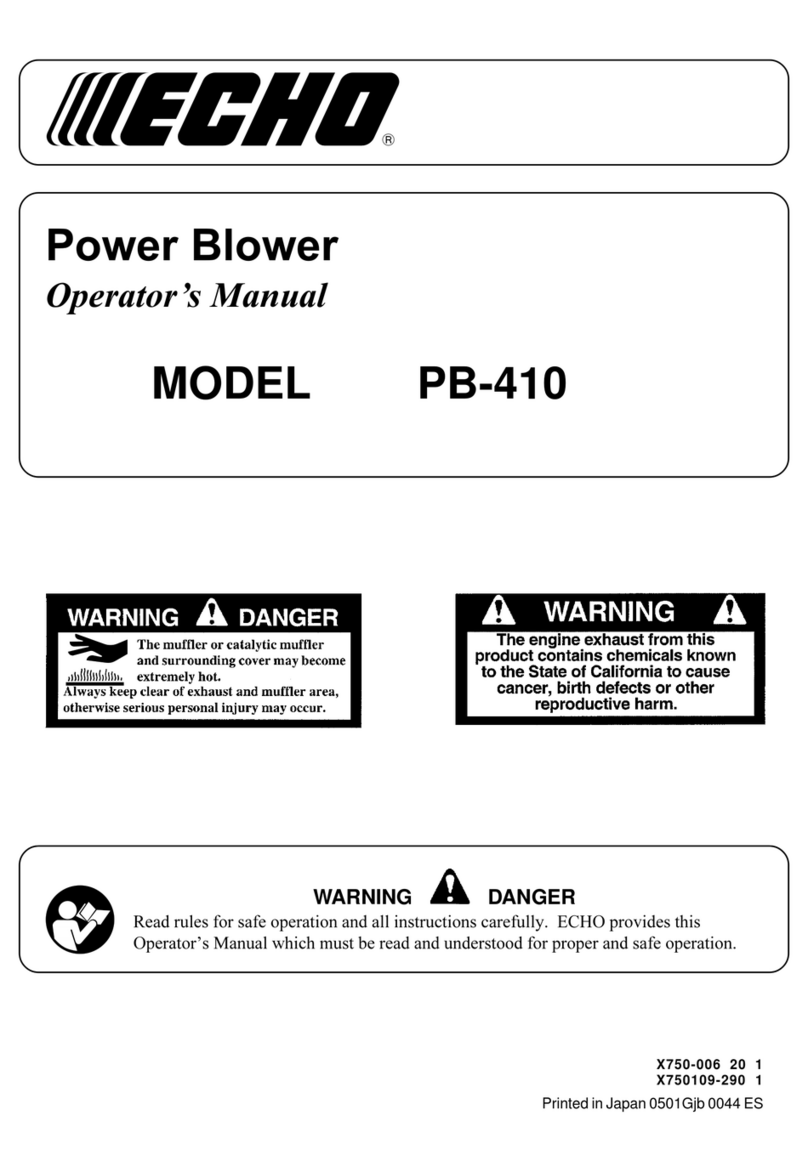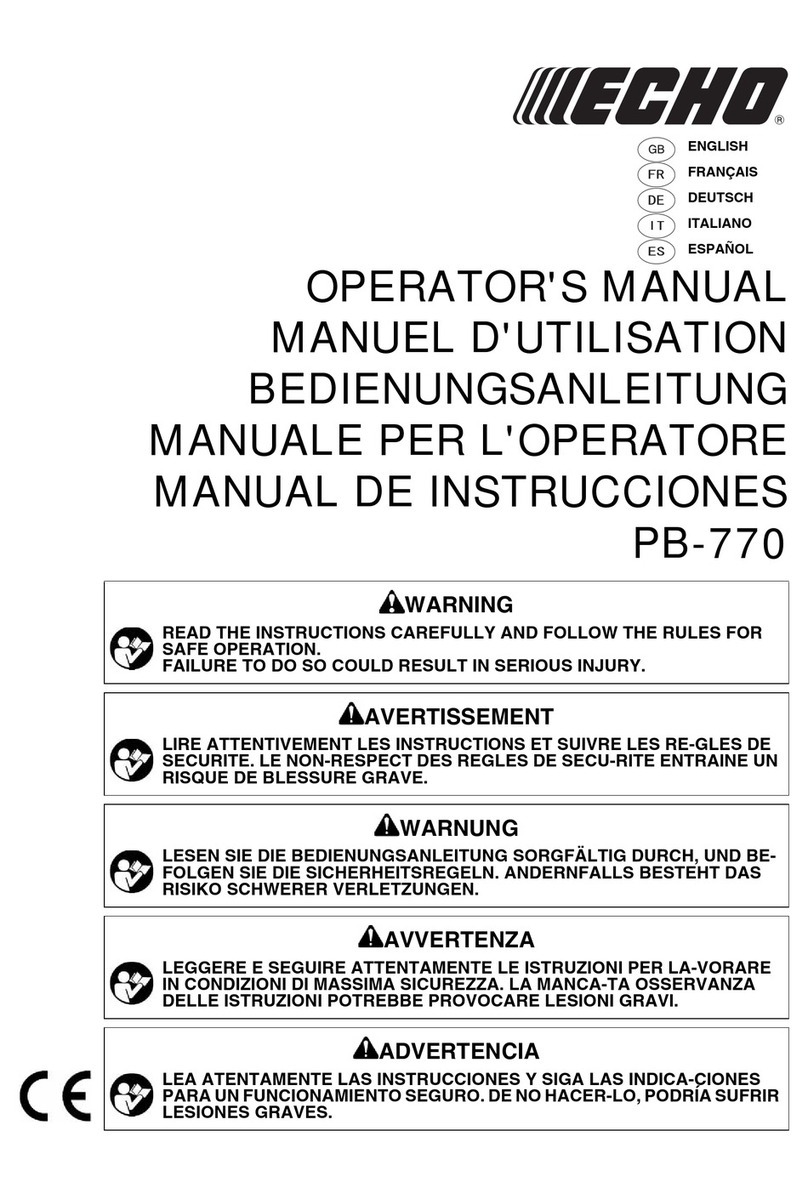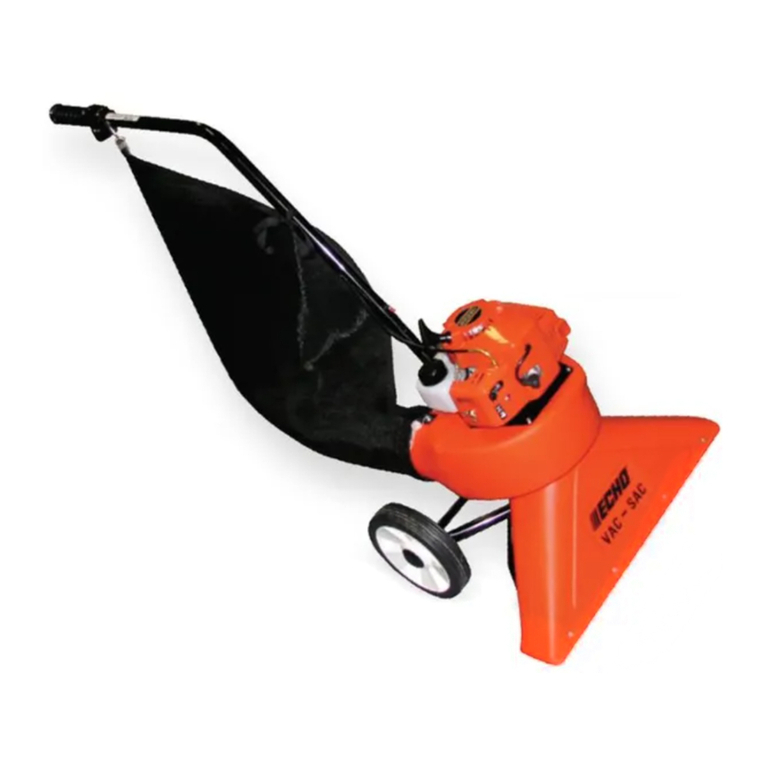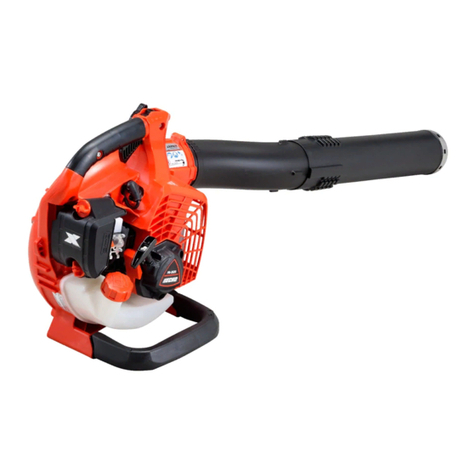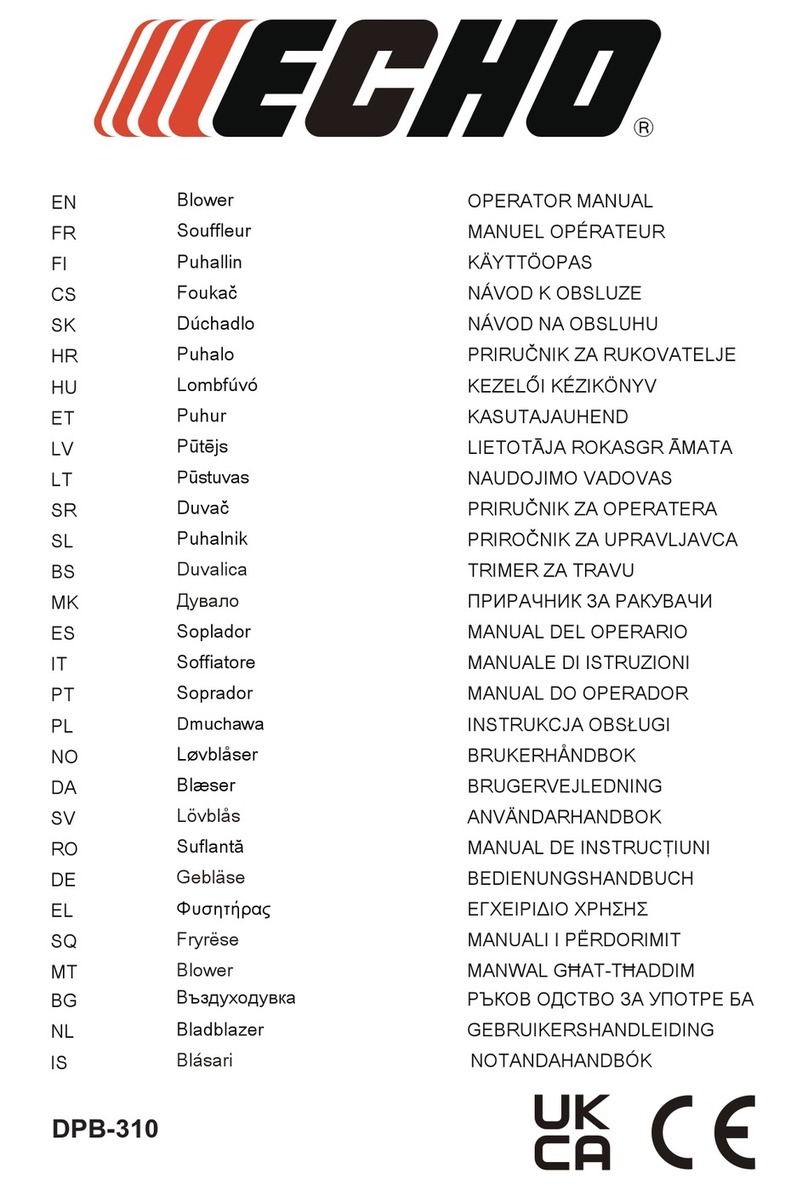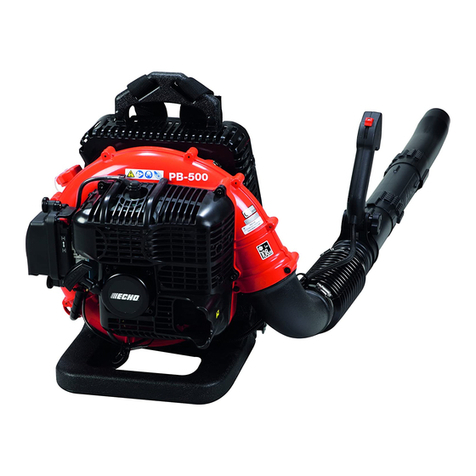
2
TABLE OF CONTENTS
Introduction................................................................2
- The Operator's Manual .......................................2
Safety .........................................................................3
- Manual Safety Symbols and Important
Information.........................................................3
- International Symbols.........................................3
- Personal Condition and Safety Equipment.........3
- Equipment...........................................................6
Emission Control .......................................................6
Description.................................................................7
Contents .....................................................................8
Assembly....................................................................9
- Install Blower Pipes / Stick Handle....................9
Operation..................................................................10
- Fuel...................................................................10
- Starting Cold Engine.........................................12
- Starting Warm Engine.......................................13
- Stopping Engine................................................13
- Operating Blower..............................................14
Maintenance.............................................................15
- Skill Levels.......................................................15
- Maintenance Intervals.......................................15
- Air filter ............................................................16
- Fuel Filter..........................................................17
- Spark Plug.........................................................17
- Cooling System.................................................18
- Exhaust System.................................................18
- Carburetor Adjustment......................................21
- High Altitude Operation................................21
Troubleshooting.......................................................23
Storage .....................................................................24
Specifications...........................................................25
Warranty Statements................................................26
Servicing Information..............................................28
- Parts ..................................................................28
- Service ..............................................................28
- Customer Assistance.........................................28
- Warranty Card...................................................28
- Additional or Replacement Manuals................28
- Manual Ordering Instructions...........................28
Specifications, descriptions and illustrative material in this
literature are as accurate as known at the time of publica-
tion, but are subject to change without notice. Illustrations
may include optional equipment and accessories, and may
not include all standard equipment.
Copyright© 2013 By Echo, Incorporated
All Rights Reserved.
INTRODUCTION
Welcome to the ECHO family. is ECHO product was designed and manufactured to provide long life and on-the-
job-dependability. Read and understand this manual. You will nd it easy to use and full of helpful operations tips and
SAFETY messages.
THE OPERATOR'SMANUAL
Keep it in a safe place for future reference. Contains specications and
information for safety, operation, maintenance, storage, and assembly
specic to this product.
